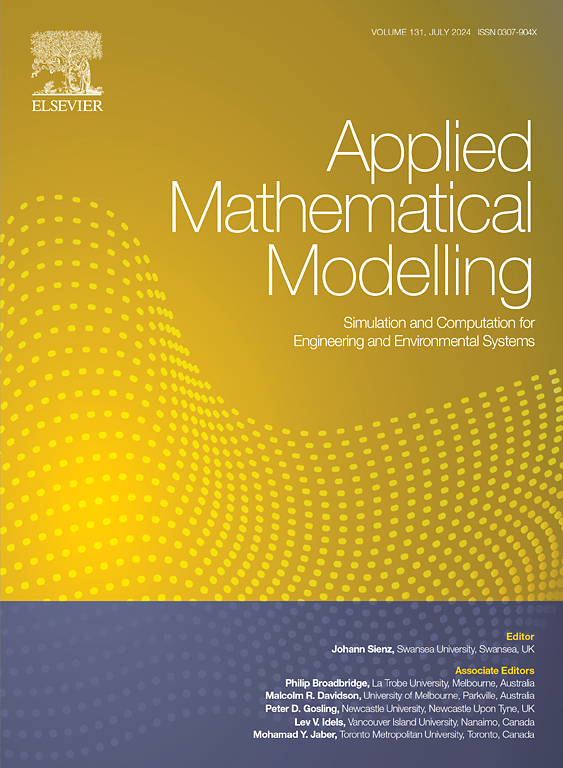Actuation and design of two-dimensional curved hard-magnetic soft bilayers
IF 4.4
2区 工程技术
Q1 ENGINEERING, MULTIDISCIPLINARY
引用次数: 0
Abstract
Hard-magnetic soft actuators (HMSAs) has gained prominence for its application in magnetically steerable soft robots, such as robotic grippers. Compared to straight HMS beam, the magneto-mechanical response of continuous and discontinuous curved multilayered HMSA under external magnetic fields is more complex. Based on the finite deformation theory and nonlinear theory of hard magnetoelasticity, this paper develops a theoretical model for a residually stressed curved HMS bilayer induced by pre-stretch under external magnetic fields. It is found that the bending angle of the bilayer can be adjusted by tuning the pre-stretch, thickness ratio and shear modulus ratio. This bending angle influences the magneto-mechanical response of the bilayer, thereby affecting the set of points reachable at the free-end of the bilayer (i.e., the workspace). The theoretical model's accuracy is validated through comparisons with experimental and simulation results. The study finds that as the pre-stretch increases, the thickness ratio and shear modulus ratio of the bilayer decrease, leading to opposite trends between workspace, maximum curvature and weight. Furthermore, based on the theoretical model, the Non-dominated Sorting Genetic Algorithm-II (NSGA-II) is adopted to address the multi-objective optimization problem of HMS bilayer. The Pareto fronts of the three-objective optimization containing weight, maximum curvature and workspace are obtained. This work provides the theoretical guidance for designing and optimizing magnetically soft robots in future applications.
求助全文
约1分钟内获得全文
求助全文
来源期刊

Applied Mathematical Modelling
数学-工程:综合
CiteScore
9.80
自引率
8.00%
发文量
508
审稿时长
43 days
期刊介绍:
Applied Mathematical Modelling focuses on research related to the mathematical modelling of engineering and environmental processes, manufacturing, and industrial systems. A significant emerging area of research activity involves multiphysics processes, and contributions in this area are particularly encouraged.
This influential publication covers a wide spectrum of subjects including heat transfer, fluid mechanics, CFD, and transport phenomena; solid mechanics and mechanics of metals; electromagnets and MHD; reliability modelling and system optimization; finite volume, finite element, and boundary element procedures; modelling of inventory, industrial, manufacturing and logistics systems for viable decision making; civil engineering systems and structures; mineral and energy resources; relevant software engineering issues associated with CAD and CAE; and materials and metallurgical engineering.
Applied Mathematical Modelling is primarily interested in papers developing increased insights into real-world problems through novel mathematical modelling, novel applications or a combination of these. Papers employing existing numerical techniques must demonstrate sufficient novelty in the solution of practical problems. Papers on fuzzy logic in decision-making or purely financial mathematics are normally not considered. Research on fractional differential equations, bifurcation, and numerical methods needs to include practical examples. Population dynamics must solve realistic scenarios. Papers in the area of logistics and business modelling should demonstrate meaningful managerial insight. Submissions with no real-world application will not be considered.
 求助内容:
求助内容: 应助结果提醒方式:
应助结果提醒方式:


